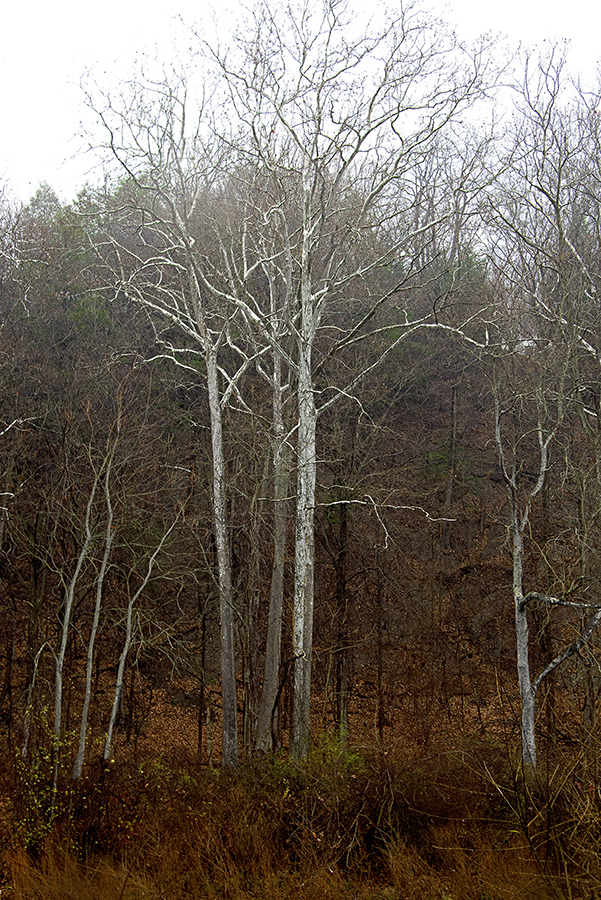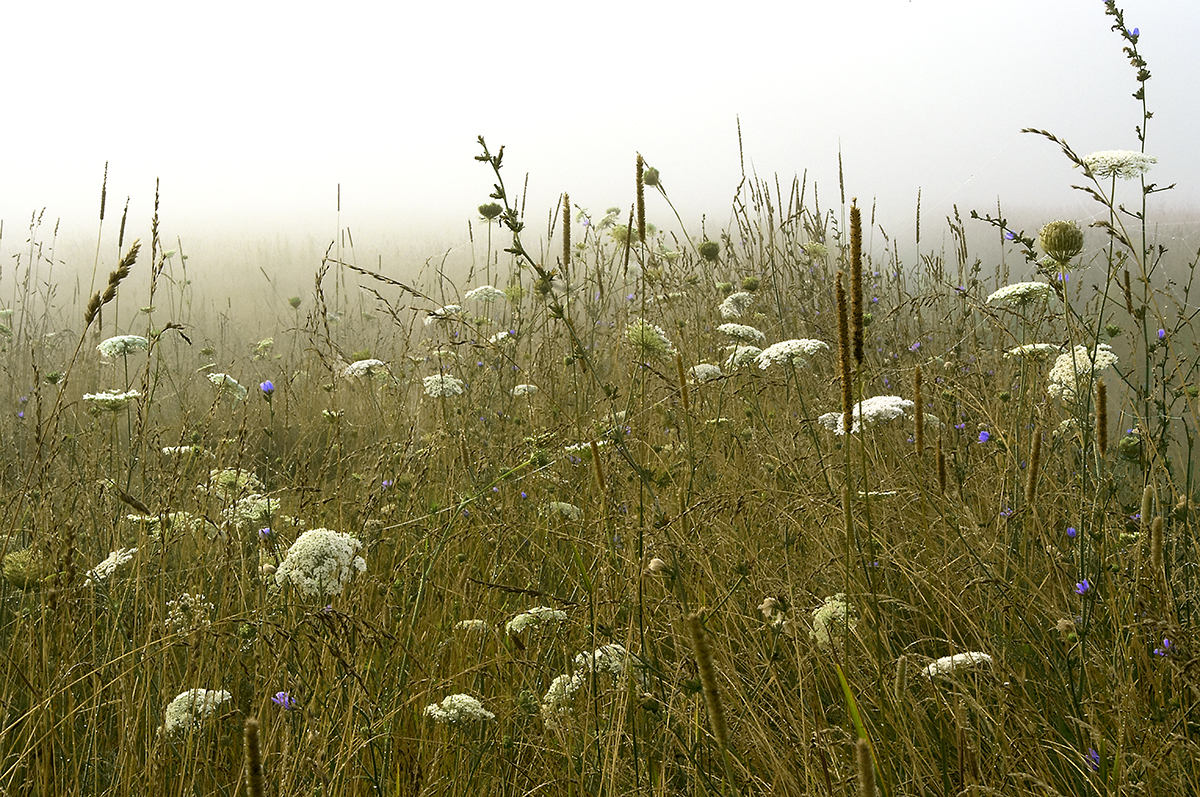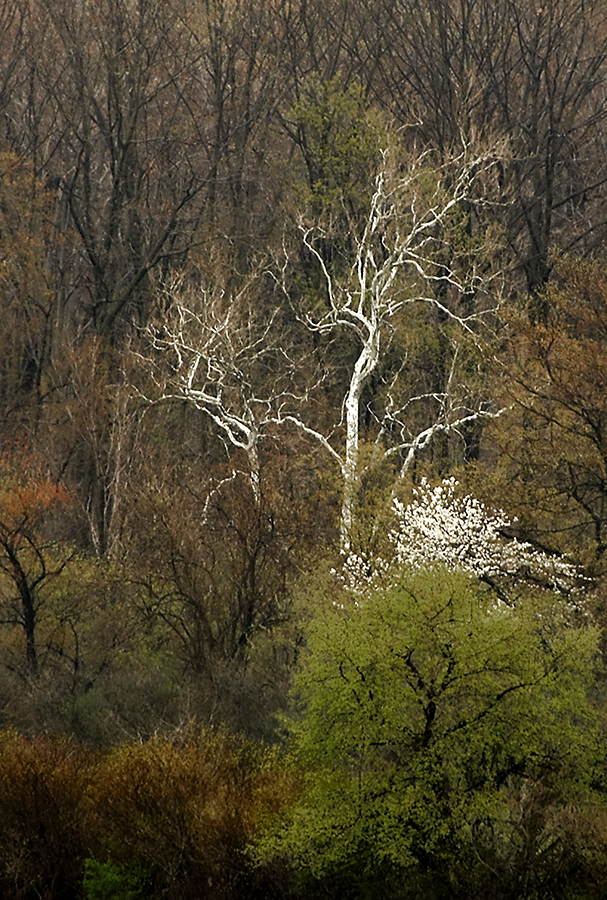
“Kate” A Walk into a New Year

“Kate” A Walk into a New Year

On the east bank, perched on a shelf of shale and siltstone 15 feet above the Chagrin River and less than a half mile south of the Gates Mills bridge, a trio of American Sycamores flanked left by young beech, right by a small hoary oak, brace for the first storm of the season. Yesterday my own mood, no doubt informed by radio reports, had me observing the landscape through a lens of apprehension. Quite conceivably the anxiety was also being shared beneath the forest floor, through messages exchanged between trees in a neural and biological network as beautiful and complex as that which grows above. Within that network of roots and ribosomes, early warnings manifest for changes in weather, disease and nutrients; challenges trees address through shared resources and a sense of community.
Today the landscape is white, dead and two dimensional.


“September”
My memory of Septembers in Northeast Ohio are of crystal skies, softly filtered sunlight and lengthening shadows, a month as temperate as its equinox implies. The image here, taken September 8th, 2012, as I walked the center path of Squire Valleevue Farm’s eastern meadow depicts a very different month, a portent of seasonal change. Stratocumulus clouds on the trailing edge of a cold front swept through that morning auguring an early winter. And in a moment of nature imitating art, the landscape bore resemblance to layers stacked in a Rothco painting, a study in color, horizontals and horizons.
This was the rare and restive September day with uncharacteristic temerity, an abruptness and “matter of factness” foreshadowing change, where the transition of seasons is rarely subtle. Even September with its few discordant days, skies prematurely brooding and bracing, the meadow waiting, a renascent source for life through each season. And still, most of the month a contrast, a nostalgic time when tall meadow grass makes its final surge then rests weary upon itself. Blue asters, tenacious through their last days, liatris and ironweed bending reluctantly, folding and fading, their roots and rhizomes anchoring the meadow through time.
I’ve often thought September in Cleveland to be a mix of memories and wistful, melancholic longings for another place or for past friends and family. The barn, its weathered sides and growing clefts reminding us of changes ahead; each season – life’s measure and mystery.

“Morning Meadow”
I took this photograph of a meadow at Squire Valleevue Farm in Hunting Valley, the morning of July 26, exactly nine years ago today. My intent was to convey the sense of impermanence through the soft weight of the morning mist. Hanging like a veil, diffusing light, waiting to be transformed, it held the faint, sweet scent of nostalgia, “saudade” from another culture. Timothy grass added its own dimension, erect like sentries with heads tightly wrapped, were sided by earthbound constellations of Queen Anne’s Lace and the season’s first aster panicles, their blue-violet flowers bending east to a new day.

“Early Blush of Spring”
* This was an earlier Facebook post (Dec., 2019) that I felt warranted inclusion on our blog in the spirit of spring. My hopes for an early spring in Ohio were premature. As of today, April 13, there are few signs of flowering abundance save the random tulip trees and the blush of green and tinges of red on the landscape. The following then is a repost of my earlier December description. Be safe in the days ahead!
“March is the Cruelest Month” (apologies to T.S. Eliot)
After a series of black and white, (“bleak is beautiful”) photographs this past week, I’m hoping to redeem myself with the promise of an early spring as had occurred at the time this photo was taken above the Chagrin river. The spring tease pictured here came in March, 2012 with the transformation of the winter landscape as average daily highs exceeded 60°, an all time record. The month included four days in the 80°’s and seven in the 70°’s and was 18° higher on average than normal.
The crabapple, in its premature cloak of green (foreground), had dropped its blossoms days earlier, and the flowering cherry trees punctuated the landscape as sycamores stood erect and bare among oaks and black willows, an early mantle of color spreading across the latter.
April that year returned to normal with a succession of frosts and temperatures below freezing proving March, not April,
the cruelest month of the year.
Designed by Elegant Themes | Powered by WordPress